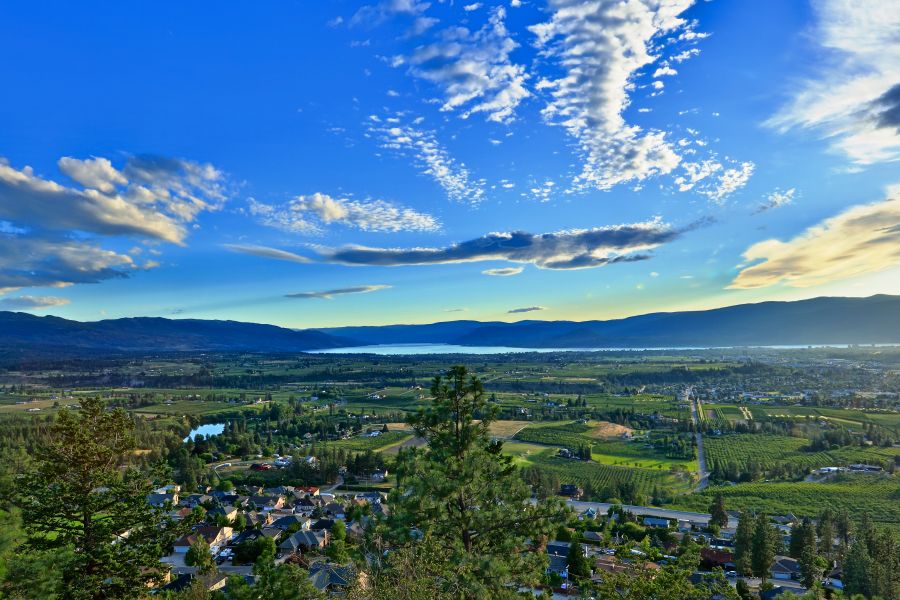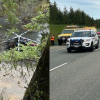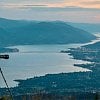When we think about Kelowna, a beautiful natural landscape with images of water come to mind, as Kelowna is home to a number of stunning waterscapes. Cycling along Waterfront Park, kayaking at Rotary Beach, or walking along the Mission Creek Greenway, residents and visitors enjoy access to a clean lake, natural wetlands, and several creeks for recreation.

Not only do these water resources provide fun and enjoyment for people of all ages, but they are also the source for our household water. When we water the lawn, flush the toilet, or turn on the tap, our water comes from the lake, a creek or ground water.
Where Does the Water Come From?
Kelowna is unique compared to most municipalities because it is home to five independent water providers operating within its municipal boundaries. All water providers, except the City of Kelowna, report to the provincial Ministry of Community, Sport and Cultural Development. These five independent water providers and their water sources are:
If you don't know who your water provider is, it's easy to find out. Simply type in your address here.
What Are the Water Use Regulations?
With irrigation season underway and the forecast for a very hot summer, it makes sense to be informed about the water use regulations in our city. Regulations are commonplace across the province and are implemented for several reasons:
1. To protect our water resources and help keep our water providers well supplied for the future.
2. To reduce peak flow demand on utility systems.
- Peak demand is when water use is at its highest, typically at the end of July and beginning of August, and puts additional strain on water systems and utility operations.
3. To encourage the adoption of efficient water use practices.
It is important to know who your water provider is in the event that they announce a change in regulations. Because each provider gets water from a different water source, it is possible that one or more may need to move to a different set of regulations in certain situations. So, while one water provider may remain under the 'normal' stage, another may need to move to Stage 1 regulations to conserve water supply for its customers. Each water provider has its own specific triggers to indicate whether to move to a higher stage of conservation regulations.
So, When Can You Water?
The five major water providers in Kelowna have adopted the same water use schedule. Currently, under 'normal' conditions (non-drought stage), watering is permitted up to three days per week.

Timing is important too!
- Automatic underground irrigation systems may run between 12 a.m. and 6 a.m.
- Manual sprinklers may run between 6 a.m. and 10 a.m. or 7 p.m. and midnight.
- Hand watering (or using a spring loaded nozzle) can occur at any time, including Mondays.
How Else Can You Save Water?
Along with following your provider's water use schedule, you can take steps to optimize your water use. It's easy and small changes can make a big difference.
- Water your lawn only about one inch (2.5 cm) per week.
- Resist the urge to increase lawn watering beyond normal summer use and allow lawns to have some brown. Grass is resilient and it will bounce back!
- Top dress lawns and gardens with compost, which has been shown to reduce water demand by up to 25% in addition to providing important nutrients.
- Consider drought-tolerant plants as part of your yard landscaping.
- Test your irrigation system for leaks and if you find a leak, contact an irrigation contractor to get it fixed.
What's In It For You?
- Save money: If you are on a metered system with your water provider, conserving water can save you money on your water bill.
- Save time: Efficient landscape techniques can reduce fertilizer and pesticide use and the need for maintenance.
- Do the right thing: Conservation is the new normal.
Whether your water comes from the ground, a creek, or a lake, these are our shared water resources and our shared responsibility. It's up to each of us to do our part to ensure our water resources are sustainable and available for generations to come.
This article is brought to you by the Black Mountain Irrigation District, Glenmore-Ellison Irrigation District, City of Kelowna, Rutland Waterworks District, and the South-East Kelowna Irrigation District.
KelownaNow sponsored content is written and posted in partnership with participating businesses. While KelownaNow retains editorial control of sponsored content, the content is created in collaboration with the sponsor.
















